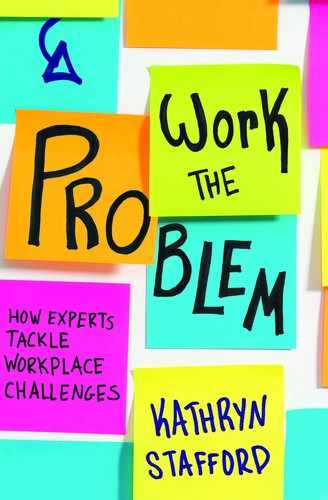FOREWORD
In today’s world of work, increasingly complex organizational and management structures make being an employee and a manager harder than ever. We’re highly interconnected, fiercely competitive, knowledge driven, and global. The markets are chaotic, resource needs are unpredictable, and we are geared for constant change. As a result, employers must be lean and flexible to survive. Employees, in turn, are less likely to trust the system to take care of them over time, and thus less likely to make immediate sacrifices in exchange for promises of long-term rewards. They are more likely to disagree openly with their employers’ missions, policies, and decisions, and challenge employment conditions and established reward systems.
Traditional sources of authority are also being steadily supplanted by new ones. Seniority, age, rank, and established practice are diminishing. Organization charts are flatter; layers of management have been removed. Reporting relationships are more temporary; more employees are being managed by short-term project leaders instead of “organization-chart” managers. More transactional forms of authority are also on the rise, such as control of resources, control of rewards, and control of work conditions. Employees look to their immediate supervisors to meet their basic needs and expectations, and freely make demands of their managers. Managers who cannot meet these needs have less and less authority in the eyes of their direct reports.
Meanwhile, most middle managers, like everybody else, have more tasks and responsibilities of their own, along with more administrative duties. In addition, managerial spans of control—the number of employees officially reporting to each supervisor—have increased, and managers are also more likely to manage remote employees. The breadth and complexity of the work being done by the employees reporting to each manager has probably also expanded.
Most people would rather work in effective organizations with outstanding managers. Organizations that consistently deliver the highest quality and service develop their employees and have clear lines of communication up, down, and across the organization. People want to work for organizations with clear missions, goals, and reporting relationships and flawless processes. Unfortunately, finding that is much harder than ever before, and it’s getting harder every day.
The 10 case studies in this book offer a look into the sort of complex and interwoven challenges that people face in the workplace today. Much like a business school intensive seminar, Work the Problem applies the classic case study pedagogy to the challenges of workplace dynamics. Grounded in very real-world scenarios, the case study method allows the reader to contemplate 10 different sets of circumstances, each with its own issues, cast of characters, and range of perspectives. The cases deal with such a range of issues—corporate culture, organizational structure, market shifts, technology, change leadership, chain of command, authority and accountability, communication, performance management, and career paths—that they become relevant to anyone.
While they find themselves in a wide range of positions in a number of different organizations, the key players in each case study are stuck in the middle of a number of stakeholders—their manager and those they manage as well as various other constituents—trying to negotiate their competing needs and expectations. Most of us would rather avoid these types of conflicts. In the old long-term hierarchical model (the pyramid organization chart), followers took for granted their managers’ authority and the authority of the employer. As a result, followers were more likely to figure out what to do, and do it, making lots of mistakes along the way, no doubt. But there was more room back then for waste and inefficiency. Not anymore.
These case studies provide so much food for thought, like a shortcut to real workplace experience. Because they are so realistic, there are no 100 percent correct answers and no easy solutions. This is evident in the two commentaries from industry experts following each case study. The nine commentators offer analysis and recommendations in response to the challenges raised in the different scenarios—they’re like a professor’s input on the case, helping the student understand what’s really going on, while also providing a framework for how one might begin approaching such a challenge in the real world.
Work the Problem is for those of us in organizations that aren’t perfect but that we need to work within to navigate and affect change from the middle, and for those who need to become better skilled so we can find and support those organizations that more closely approach our ideal.
—Bruce Tulgan
June 2018
